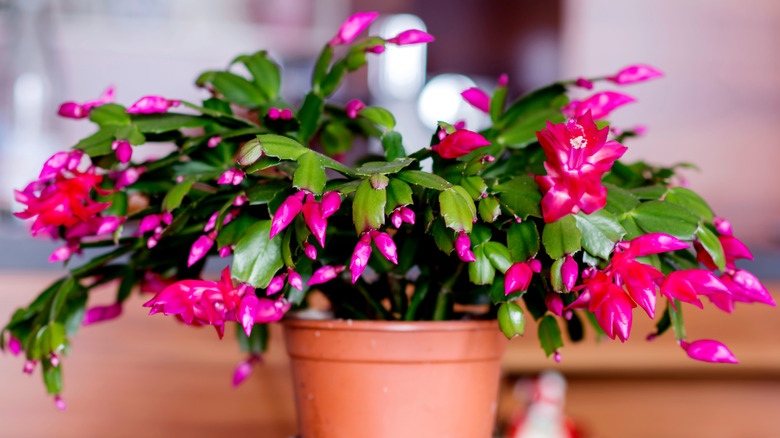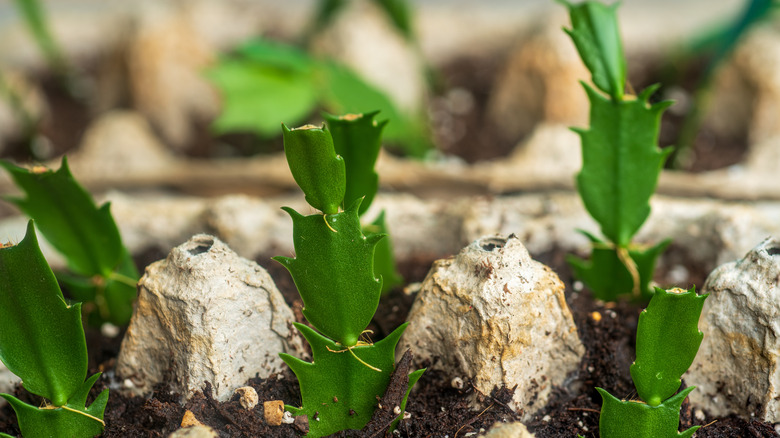The Timing Trick That Makes Propagating A Christmas Cactus A Breeze
In addition to being a festive element of holiday décor, a Christmas cactus (Schlumbergera x buckleyi.) is also a houseplant that can brighten up your home all year long. These plants are low-maintenance, plus they are fun and easy to propagate. In fact, you could potentially fill your home with free Christmas cacti by propagating cuttings. And the trick you can use for better success with that project is to do it in spring or summer.
There's a reason pruned or broken stems from Christmas cacti are so easy to propagate — it's part of their reproductive strategy. Many succulents like these have the ability to produce roots from leaves or stems that get broken off, making it easy for gardeners to grow new plants. Imagine a Christmas cactus in its original rainforest environment, growing as an epiphyte on a tree. If a tree branch were to fall during a storm and knock some of the leafless stems of the holiday cactus off, the broken off stems would be able to produce roots from their wounds and anchor themselves in a new location. When we grow these plants indoors, we can mimic that natural behavior to create new houseplants, but timing is important.
Propagate new Christmas cacti plants in spring or summer
Although Christmas cacti cuttings can root themselves throughout the year, spring and summer are the best times for this type of propagation. That's because the warm seasons are when these plants are actively growing, making rooting easier and more successful. Also, it's best to take cuttings when you prune your Christmas cactus before mid-summer, since these festive plants bloom in fall and winter. If you're hoping for flowers, you won't want to trim off any potential buds.
To try growing new plants in this way, in late spring or early summer, take stem cuttings that have between two and five segments. If your mature Christmas cactus is already producing roots on its stems, you can use these to your advantage to speed up the process. Either way, let the segments callus over out of direct sun before trying to propagate them, then stick the cuttings one inch deep in moist growing medium. Cover the pot with a plastic bag to keep humidity in, and expect roots to start forming within three to eight weeks. If you accidentally break a branch off of your plant and want to propagate it outside of the warm seasons, you can apply cloning hormone to the base of the cutting to boost its chances of success.

